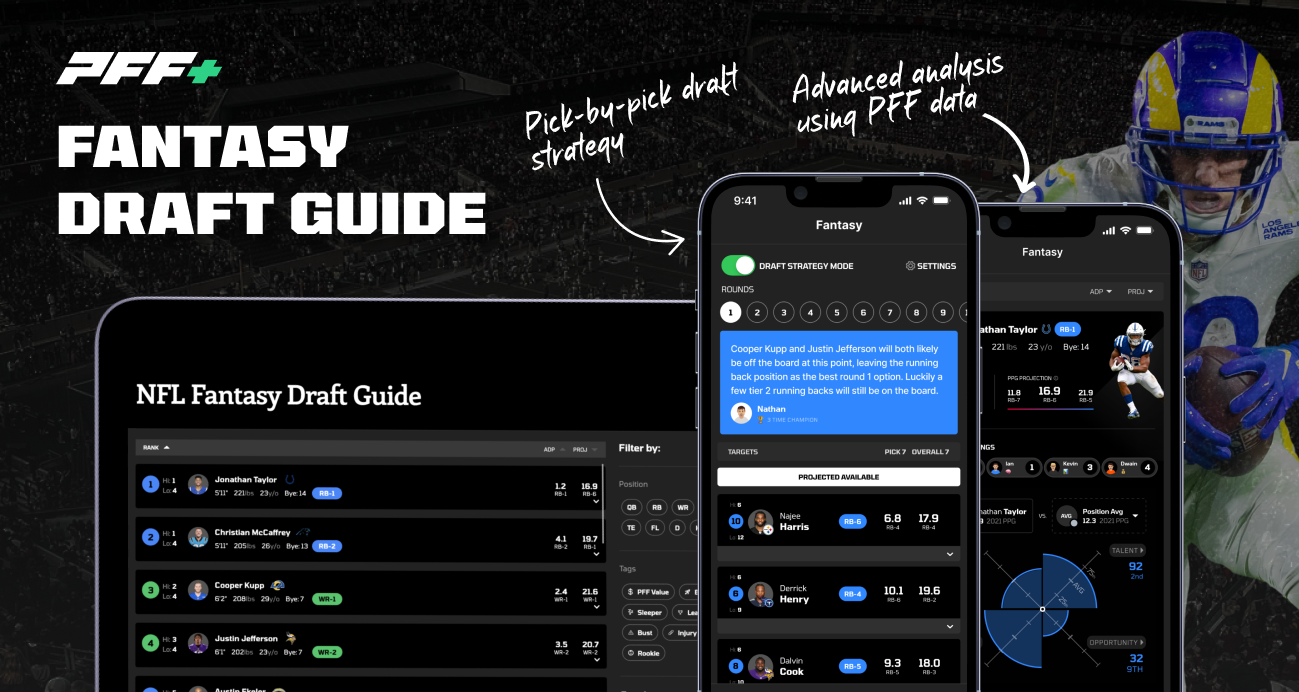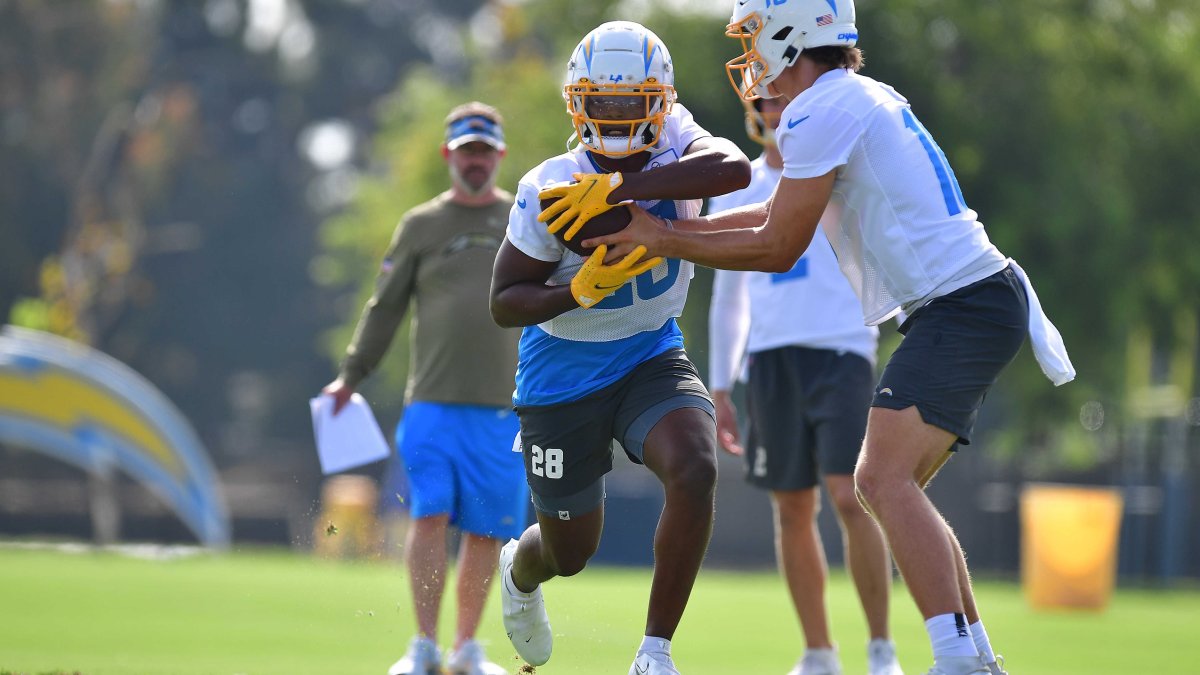• There are viable upside running backs scattered across the later rounds of full-PPR fantasy football drafts, including the Los Angeles Rams‘ Darrell Henderson, Detroit Lions‘ Jamaal Williams and Chicago Bears‘ Khalil Herbert.
• Pass-catching talents — such as the Buffalo Bills‘ James Cook and Philadelphia Eagles‘ Kenneth Gainwell are prime targets in full-PPR formats.
• Rookies Isaiah Spiller (Los Angeles Chargers), Rachaad White (Tampa Bay Buccaneers) and Tyrion Davis-Price (San Francisco 49ers) each present solid handcuff value at cost.
• Click here for the rest of Ian Hartitz's fantasy football content.
Getting sniped in a fantasy football draft is an all-time terrible feeling. The player you wanted was right there for the taking until they weren’t, and now you’re on the clock trying not to panic, which isn't great!
The good news is that there remains solid positional value at nearly every stage of the draft while average draft positions (ADP) continue to be smoothed out, especially at running back, where the typical “dead zone” has pushed adequate late-round options into the double-digit rounds of a typical 12-man point-per-reception (PPR) draft.
Now, let's dive into a breakdown of my favorite late-round running back from Rounds 10 through 18 relative to their cost. The running back’s consensus ADP had to be within three overall spots of their round’s start point to qualify.

Round 10: RB James Cook, Buffalo Bills (ADP RB38; pick 106)
Capable of splitting out wide and winning downfield, Dalvin’s younger brother has the skill set to be a PPR darling should the Bills’ free agency flirtation with J.D. McKissic be a sign that they plan on featuring the position more than ever in the passing game. Concerns over Josh Allen’s willingness to check down are warranted, but it’s also true that Cam Newton didn’t exactly throw to running backs until he had Christian McCaffrey.
It’s not essential for a running back to carry the ball more than 200 times in order to ball out in full-PPR leagues so don’t be afraid to especially chase Cook in keeper formats — historically, second- and third-round backs boomed up positional rankings by 9.2 spots from 2010 to 2020.
Round 11: RB Isaiah Spiller, Los Angeles Chargers (ADP RB43; pick 124)
While a committee system behind Austin Ekeler is certainly possible, Spiller does have the sort of theoretical three-down ability to warrant later-round fantasy exposure. PFF wrote the following about Spiller in our 2022 NFL Draft Guide:
“Where he wins: Versatility. Spiller wins by being able to execute any role asked of him. Whether it's taking 30 carries in a game, seeing a half-dozen targets, or being assignment sound in pass protection, Spiller won't look out of place.
What’s his role: Gap-scheme RB. Spiller has the size and pedigree to handle an every-down role. He's a better fit for a gap scheme where his overly patient running style isn't likely to be a detriment.
Where he can improve: Decisiveness. Spiller has to be more decisive as a runner at the next level. He can get away with stopping his feet behind the line of scrimmage to find the perfect hole in college, but that won't fly in the league.”
Standalone value without an Ekeler injury might be a bit of a stretch, but Spiller would immediately be in the RB2 conversation should the Chargers’ 27-year-old starter be forced to miss any action.
Round 12: RB Darrell Henderson, Los Angeles Rams (ADP RB46; pick 134)
Neither Henderson nor Sony Michel needed to even be all that good with their touches in order to put up solid fantasy production in 2021, as their expected PPR points per game were on par with fantasy’s most-productive backs during these respective stretches:
- Henderson Weeks 1-12: 15.7 PPR points per game (RB15); 16.5 expected PPR points per game (RB11)
- Michel Weeks 13-18: 14.8 PPR points per game (RB18); 19.3 expected PPR points per game (RB3)
McVay then briefly turned over the backfield back to Cam Akers before embracing a multi-back approach for the season’s final two games. The Rams utilized the following backfield split in the Super Bowl:
- Akers: 37 snaps, 13 carries, 19 routes, 4 targets
- Henderson: 21 snaps, 4 carries, 15 routes, 5 targets
- Michel: 7 snaps, 2 carries, 4 routes, 0 targets
While Henderson shouldn’t be completely out of the picture for the starting job, McVay turned the backfield over to Akers at the end of 2020 before Henderson’s injury, and he trusted Akers more times than not with the season on the line in the Super Bowl. Still, Henderson is a prime “flex with benefits” option who could see around 10 combined carries and targets per week with superhero handcuff upside should Akers miss any time, particularly if McVay’s training camp comments about having two starting running backs wind up meaning anything.



 © 2024 PFF - all rights reserved.
© 2024 PFF - all rights reserved.